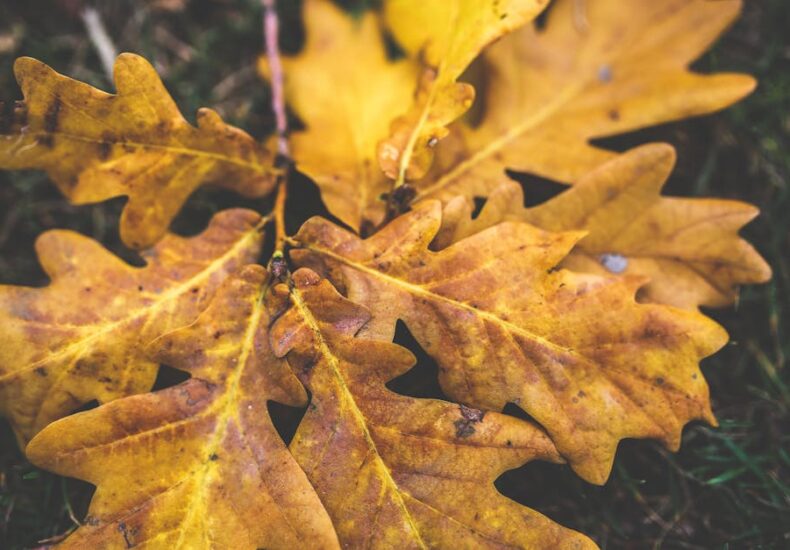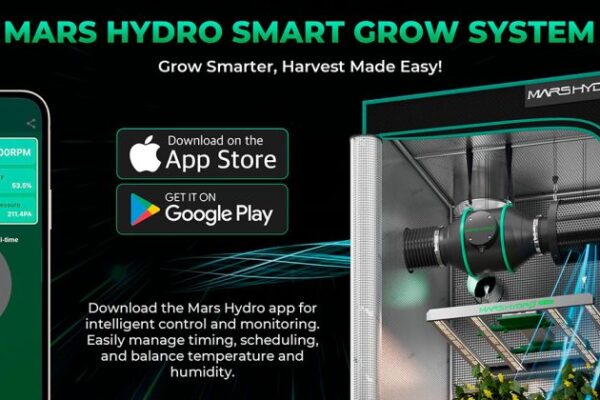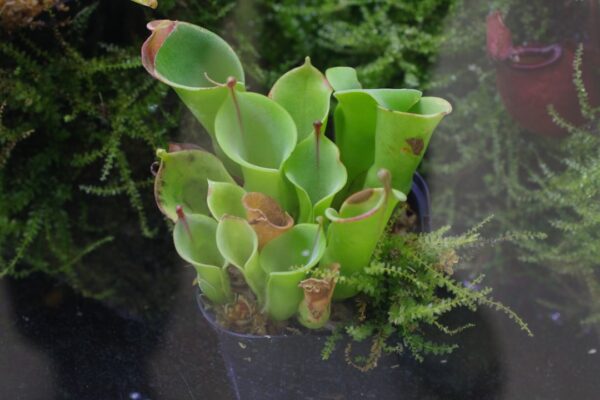
Autumn’s Bounty: Your Comprehensive Guide to Preparing Your Garden for a Flourishing Spring
As the vibrant greens of summer fade to the rustic hues of autumn, many gardeners hang up their trowels, believing the season’s work is done. However, the crisp fall air signals not an end, but a crucial and transformative beginning. The effort and care you invest in your garden during these cooler months are a direct down payment on the health, vibrancy, and productivity of your spring and summer landscape. This period is a golden opportunity to clean, nourish, and plan, setting the stage for a spectacular floral display and a bountiful harvest next year. Far from being a chore, autumn gardening is a meditative practice that enriches your soil and your well-being.
This guide delves into the essential tasks of fall garden preparation, transforming them from a simple to-do list into a strategic plan for success. We’ll explore the science behind soil amendment, the art of strategic planting, and the practicalities of tool maintenance. Engaging in these activities is not just a form of Home Improvement; it’s an investment in your property’s ecosystem and your personal Health & Wellness. By embracing the rhythm of the seasons, you can ensure your garden emerges from its winter slumber stronger and more beautiful than ever before, turning your outdoor space into a sanctuary for both nature and the soul.
The Foundation of a Healthy Garden: Autumn Cleanup and Soil Preparation
The groundwork for a thriving spring garden is quite literally laid in the fall. This season is dedicated to tidying up the remnants of summer’s growth and, most importantly, feeding the soil that will sustain next year’s plants. Think of your garden bed as a battery; fall is the time to recharge it fully for the demands of the coming year. This process is fundamental to Sustainable Living and creates a resilient garden ecosystem.
Clearing the Debris: More Than Just Aesthetics
The first step in fall prep is a thorough cleanup, but it requires a discerning eye. It’s tempting to clear everything to the bare ground, but a more nuanced approach yields better results.
Best Practices:
- Remove Diseased Plants: Any plant material showing signs of disease—like powdery mildew on squash vines or black spot on rose leaves—should be removed and disposed of in the trash, not the compost bin. This prevents fungal spores and bacteria from overwintering in your soil and re-infecting plants next spring.
- Cut Back Perennials: Trim back herbaceous perennials after the first hard frost has killed their foliage. Cut stems down to a few inches above the ground. However, consider leaving perennials with sturdy seed heads, like coneflowers and black-eyed Susans. These provide a vital food source for birds through the winter and add structural interest to the snowy landscape, fostering a sense of Community Living with your local wildlife.
- Manage Fallen Leaves: Don’t send your leaves to the landfill! Fallen leaves are a valuable resource. Rake them off the lawn where they can smother the grass, but use them as a natural mulch in your garden beds or add them to your compost pile. Shredding them with a lawnmower first helps them break down faster. This is a core principle of Eco-Friendly Living and Zero Waste.
The Art and Science of Composting
Your fall cleanup will generate a wealth of organic material, the perfect ingredients for nutrient-rich compost. Creating a compost pile is one of the best DIY Projects for any gardener. The goal is to create a balanced mix of “greens” (nitrogen-rich materials like kitchen scraps and green plant cuttings) and “browns” (carbon-rich materials like dried leaves, straw, and shredded newspaper). For optimal decomposition, aim for a carbon-to-nitrogen (C:N) ratio of approximately 30:1. In fall, you’ll have an abundance of “browns” from fallen leaves, so be sure to layer them with kitchen scraps or a final lawn mowing to add some “green” nitrogen. Turning the pile periodically and keeping it moist will yield “black gold” by springtime, a perfect, free soil amendment that boosts Nutrition News right from your own yard by enriching the soil your food grows in.
Amending and Protecting Your Soil
With the beds cleared, the final and most crucial step is to feed the soil. Fall is the ideal time to add amendments because the winter freeze-thaw cycles, along with soil organisms, will work to break them down and integrate them into the soil structure. Spread a 2-4 inch layer of finished compost, well-rotted manure, or shredded leaves over the surface of your beds. You can gently turn it into the top few inches of soil or simply leave it as a top dressing—a technique known as sheet mulching. For a more advanced approach to Green Living, consider planting a cover crop like winter rye, clover, or vetch. These crops grow during the fall and winter, preventing soil erosion, suppressing weeds, and adding valuable nitrogen back into the soil when they are tilled in the spring. This is a long-term strategy that improves soil health year after year, a wise move in Financial Planning for your garden’s future.
Planting for the Future: Autumn’s Sowing and Safeguarding

While much of the garden is going dormant, fall is a surprisingly active planting season. The combination of warm soil and cool air creates the perfect conditions for root establishment, giving new additions a significant head start over those planted in the spring. This is your chance to design the first wave of color for the coming year.
Bulbs: The Promise of Spring
Planting spring-blooming bulbs is perhaps the most rewarding fall gardening task. It’s an act of faith that pays off spectacularly when tulips, daffodils, crocuses, and hyacinths emerge from the cold ground. When planning your bulb layout, think about how it will complement your Home Decor and overall landscape design. Create natural-looking drifts by tossing handfuls of bulbs and planting them where they land, or design formal patterns for a more structured look.
A Real-World Scenario: A homeowner wants a cheerful welcome after a long winter. In October, they plant 50 ‘Tête-à-Tête’ daffodil bulbs along their front walkway. The general rule of thumb for planting depth is 2-3 times the height of the bulb. For these small daffodils (about 1.5 inches tall), a planting depth of 4-5 inches is ideal. Come March, they are greeted by a vibrant yellow path, a beautiful piece of Outdoor Living design that boosts curb appeal and provides a daily dose of joy, contributing positively to Mental Health.
Planting Trees, Shrubs, and Perennials
Fall is the absolute best time to plant most trees, shrubs, and hardy perennials. Planting in autumn allows these plants to focus all their energy on developing a robust root system without the stress of supporting foliage growth in the summer heat. This leads to more resilient and vigorous plants. When choosing plants, consider their mature size and light requirements to ensure they thrive in their chosen spot. This kind of long-term thinking is a form of Personal Development for any gardener, moving from short-term results to lasting landscape architecture.
Protecting Your Investments: Winterizing Your Plants
Just as we prepare our homes for winter, our plants need protection too. After the ground has frozen, apply a 2-3 inch layer of mulch (shredded leaves, straw, or wood chips) around the base of tender perennials, roses, and newly planted shrubs. This insulates the roots, not from the cold itself, but from the damaging effects of repeated freezing and thawing which can heave plants out of the ground. For delicate shrubs like boxwoods or arborvitae in windy locations, consider creating a burlap screen to protect them from winter wind and sunscald. This simple act of Plant Care safeguards your financial and emotional investment in your garden.
The Gardener’s Workshop: Maintenance, Planning, and Smart Tech
The transition to winter provides a valuable pause. This is the time to take stock, care for your equipment, and plan for the season ahead. A little organization now can prevent a frantic scramble in the spring and make the entire gardening experience more enjoyable and productive.
Essential Tool Maintenance
Your tools are your partners in the garden. Putting them away dirty and dull is a recipe for rust and frustration. Taking an hour for maintenance is a fantastic Budget Tip, as it dramatically extends the life of your tools, saving you from costly replacements.

- Clean: Scrape off all mud and debris. Use a wire brush for stubborn dirt and wash with soap and water. Dry them thoroughly.
- Sharpen: A sharp edge makes any task easier and is healthier for your plants, creating clean cuts that heal quickly. Use a mill file to sharpen the edges of shovels, hoes, and spades. Use a sharpening stone for pruners and loppers.
- Oil: Wipe down metal parts with a lightly oiled rag (using lubricating oil like WD-40 or even vegetable oil) to prevent rust. Sand and apply linseed oil to wooden handles to prevent them from cracking. This simple routine is a form of Mindfulness, a quiet, focused task with a tangible reward.
Infrastructure Check and Winterization
Your garden’s infrastructure needs attention too. A common pitfall is leaving water in hoses or irrigation systems. When this water freezes, it expands and can split pipes and hoses. Drain all hoses, roll them up, and store them in a garage or shed. If you have an irrigation system, follow the manufacturer’s instructions to blow out the lines with an air compressor. This is a critical piece of Home Security against property damage. Empty and clean terracotta and ceramic pots. If left outside with soil in them, they can absorb water, freeze, and crack. Store them upside down in a dry location. This is also a good time to inspect raised beds and trellises for any needed repairs—a perfect weekend DIY Project.
Leveraging Technology for Garden Planning
Use the quieter winter months to plan next year’s garden. This is where Technology for Home can be a great asset. Use garden planning apps or software to map out your vegetable beds, practice crop rotation, and keep notes on what worked and what didn’t. This strategic approach boosts your garden’s productivity. You can research new plant varieties online and order seeds before they sell out. This planning phase is a great way to improve your Productivity Tips and apply them to your hobby, ensuring a well-organized and less stressful spring planting season. It also allows you to find the best deals on seeds and supplies, aligning with smart Personal Finance habits.
Cultivating Well-Being: The Personal Benefits of Autumn Gardening
The tasks of fall gardening offer more than just a beautiful yard in the spring; they are profoundly beneficial for our physical and mental well-being. The garden is a space for healing, reflection, and gentle activity, making it a cornerstone of a holistic lifestyle.
The Physical and Mental Harvest

The physical work of raking leaves, turning compost, and digging holes is a fantastic form of exercise. It’s a low-impact workout that engages multiple muscle groups, aligning perfectly with practical Fitness Tips for a healthy lifestyle. Beyond the physical, the mental benefits are immense. The repetitive, rhythmic tasks can be a form of active Meditation, helping to quiet the mind and reduce anxiety. Spending time in nature, even in your own backyard, is a proven method for Stress Management. For those in Remote Work situations, stepping into the garden provides a vital break from screens and helps maintain a healthy Work-Life Balance.
Harvesting and Preserving
Autumn is also a time for the final harvest of crops like winter squash, pumpkins, carrots, and kale. Bringing in this food and finding ways to preserve it connects us directly to our food source. Learning to can, freeze, or dehydrate your harvest is not only a valuable life skill but also a way to enjoy Healthy Recipes and nutritious food all winter long. This practice supports better Meal Planning and reduces reliance on grocery stores, a tangible step toward self-sufficiency.
Recommendations for a Successful Transition
To ensure a smooth and effective fall gardening season, here are some final recommendations:
- Prioritize Soil Health: Your number one goal should be to protect and enrich your soil. All other tasks support this.
- Work with Nature: Leave some seed heads for birds and create a leaf-litter pile in a corner for beneficial insects to overwinter. – Create a Checklist: To avoid feeling overwhelmed, make a simple list of tasks. This is a great Organization Tip that can be applied to any project, from Decluttering your home to managing your garden.
- Pace Yourself: Enjoy the process. Fall gardening should be a pleasant, mindful activity, not a frantic rush. It’s a key part of Aging Well and maintaining an active, fulfilling hobby throughout life.
Conclusion: The Gardener’s Quiet Promise
Fall gardening is an act of profound optimism. It is the quiet promise we make to the future, a testament to the belief in renewal and rebirth. The work done in autumn—clearing, composting, amending, and planting—is the foundation upon which the spectacle of spring is built. By embracing these essential tasks, you are not merely tidying up; you are actively participating in the cyclical magic of nature. You are enriching your soil, safeguarding your plants, and cultivating a space that will provide beauty, sustenance, and tranquility for the year to come. As you put your garden to bed for the winter, you can rest well, knowing you’ve given it everything it needs to awaken with spectacular and vibrant life.
Archives
- December 2025
- November 2025
- October 2025
- September 2025
- August 2025
- October 2023
- September 2023
- August 2023
- July 2023
- June 2023
- May 2023
- April 2023
- March 2023
- February 2023
- January 2023
- December 2022
- November 2022
- October 2022
- September 2022
- August 2022
- June 2022
- May 2022
- April 2022
- March 2022
- January 2022
- December 2021
- November 2021
- October 2021
- August 2021
- November 2020
- July 2020
- May 2020
- April 2020
- March 2020
- August 2018
- July 2018
- June 2018
- April 2018
- March 2018
Categories
- Age Groups
- AI/ML
- Alternative Medicine
- Animal Health
- Animal Husbandry
- Animals
- Anti-Aging
- Architectural Design
- Auditory Science
- Augmented Reality
- Automation
- Babies
- Baby
- Beauty & Skincare
- Biohacking
- Biomechanics
- Book Reviews
- Breastfeeding
- Budgeting
- Business
- Cardiovascular Health
- Career Advice
- Career Development
- Career Growth
- Cats
- Chess
- Chronobeauty
- Circular Economy
- Cleaning Tips
- Cloud Computing
- Cognitive Health
- Cognitive Performance
- Cognitive Science
- Community
- Community Building
- Community Engagement
- Community Living
- Computer Vision
- Consumer Guides
- Consumer Trends
- Container Gardening
- Content Analysis
- Content Non-Technical
- Content Strategy
- Cosmetic Chemistry
- Cultural Events
- Cycling
- Data Analysis
- Data Engineering
- Data Science
- Design Psychology
- Developer Productivity
- Diet
- Diet
- Digital Identity
- Digital Media
- Digital Wellbeing
- DIY Projects
- Dogs
- Engineering Culture
- Entertainment News
- Environmental Impact
- Environmental Science
- Equity Compensation
- Exercise
- Exercise Science
- Exercise Technique
- Exotic Pets
- Fall Gardening
- Family
- Family Health
- Family Life
- Fashion Business
- Fashion Industry
- Fashion News
- Fashion Tech
- Financial Analysis
- Financial Planning
- Flooring Maintenance
- Food
- Food Psychology
- Food Safety
- Food Tech
- Functional Fitness
- Functional Training
- Future Of Work
- Garden Care
- Garden Maintenance
- Gardening Tips
- Greece
- Greek
- Greek Food
- Gymnastics
- Hardware Engineering
- Health
- Health And Wellness
- Health Informatics
- Health Science
- Health Tech
- Healthcare Management
- Healthy Eating
- Healthy Recipes
- Holistic Health
- Holistic Wellness
- Home & Living
- Home Decor
- Home Financing
- Home Health
- Home Improvement
- Home Organization
- Horticulture
- Identity Management
- Industrial Design
- Industry Analysis
- Infant Nutrition
- Infrastructure Management
- Ingredient Deep Dive
- Integrative Medicine
- Interior Design
- Internet of Things
- Internet of Things (IoT)
- Invalid Request
- Investment Strategies
- Investment Strategy
- IoT
- Kids
- Leadership Development
- Learning Strategies
- Lifestyle
- Lifestyle Brands
- Lifestyle News
- Lifestyle Optimization
- Literary Criticism
- Literature
- Logistics Management
- Material Science
- Materials Science
- Meal Planning
- Media Analysis
- Meditation
- Mental Health
- Mental Performance
- Mental Wellness
- Miami
- Miami Food
- Mind And Body
- Minimalism
- Mobile Development
- Neuroscience
- No Applicable Categories
- Nutrition
- Nutrition News
- Operating Systems
- Operational Resilience
- Opinion
- Organization Tips
- Outdoor Living
- Over 40
- Over 50
- Over 60
- Parenting
- Parenting
- Parenting Strategies
- Performance
- Personal Development
- Personal Finance
- Personal Growth
- Personal Productivity
- Pet Care
- Pet Safety
- Philosophy
- Politics
- Productivity
- Protein
- Psychology
- Psychology of Space
- Reading Culture
- Real Estate Investment
- Recipes
- Regulatory Compliance
- Remote Work
- Renovation Planning
- Resource Management
- Responsible Pet Ownership
- Retail Strategy
- Robotics
- Science
- Seafood
- Seasonal Gardening
- Security
- Self-Care
- Skincare Science
- Skincare Trends
- Sleep
- Sleep Health
- Smoothies
- Social Impact
- Soft Skills
- Soil Health
- Spatial Computing
- Spatial Design
- Stress Management
- Supplements
- Sustainability
- Sustainability Science
- Sustainable Engineering
- Sustainable Fashion
- Systems Engineering
- Tax Optimization
- Tax Strategy
- Travel
- Travel News
- Travel Safety
- Travel Tips
- Trend Analysis
- Uncategorized
- Urban Planning
- Veggie
- Virtual Events
- Volunteering
- Wealth Management
- Wearable Technology
- Wellness
- Wellness Technology
- Work-Life Balance
- Workplace Culture
- World
- Writing
- Writing Skills
- Yoga News
- Zero Waste




Leave a Reply